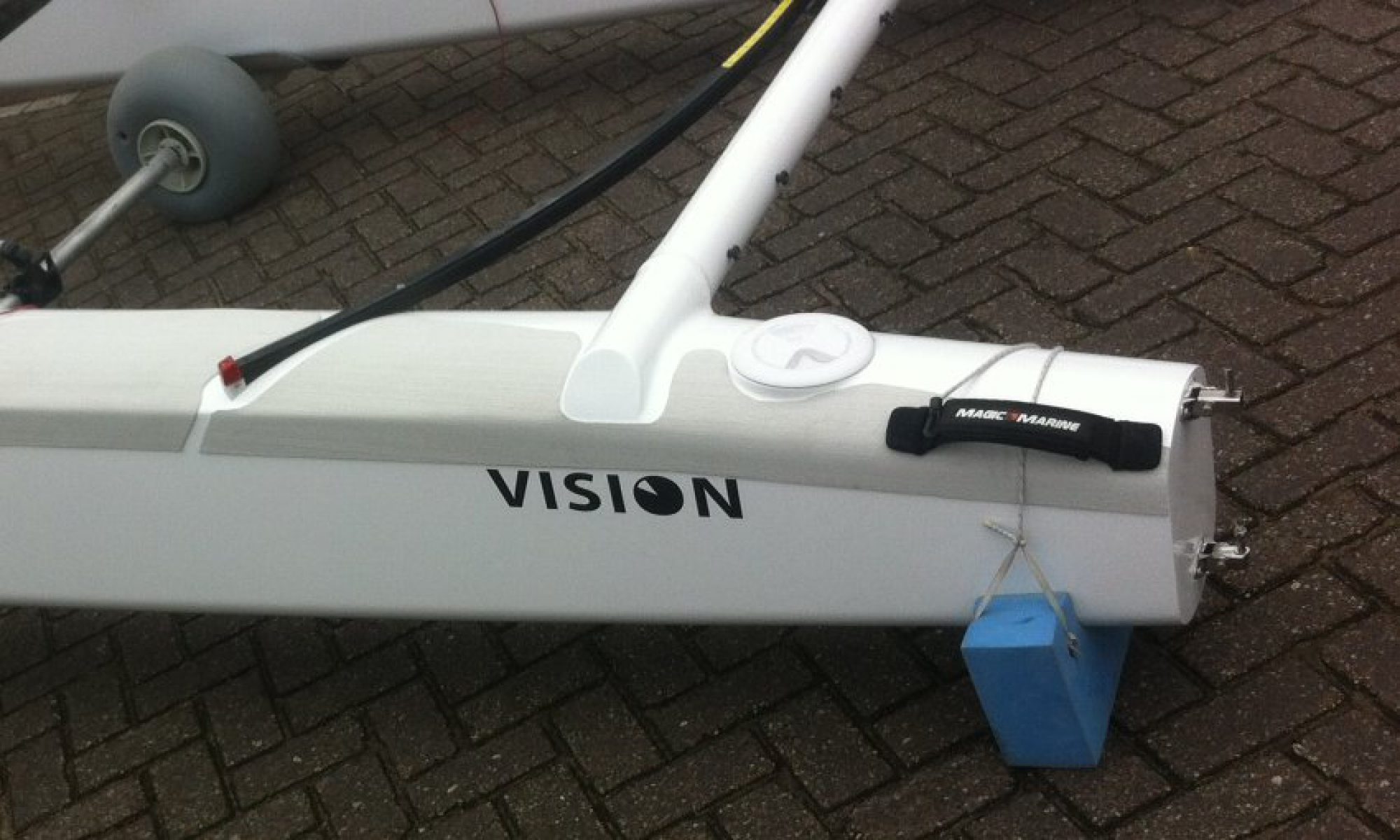The first carbon mast for A-class catamarans was produced and used in France in the late 1980’sh. It was the replacement for the aluminium mast and it was lighter. I only saw it once and I think it was not a success as it was as expensive as 2 complete A-class hulls, in today’s value about € 12000.
The first production of carbon mast was started in Italy in 1993. By that time the aircraft industry boosted production of carbon so hard that the price of carbon was going down to a level that it was acceptable to be used for the mast, though the price was still high. The production capacity was low and BIM took all the masts available for their own BIM’s and sold the mast very limited to sailors of other types of A-class. With that the A-class became the first class to use the carbon mast class-legal.
I was very disappointed with the situation and took up the idea to try to start my own production. I had already produced an A-class of my own design, so was no novice. I sailed an A-class from 1974 and also started to produce my own boat, the PESA, as I was not happy with the designs available at the time.
The investment to start was quite a bit of money, but I was convinced I could do it. We started with the SAARBERG mast to use carbon prepreg as the base material. A mould was designed with to a similar profile available in aluminium which was experienced as being good. The mould was extruded in two pieces, front mould and rear mould. We built an oven which could heat the mould to the required temperature.
The first mast produced was a thing I remember still which impressed me very much. It was looking good, weight 9kg versus the alu section of minimum 16kg. We used it and it did not break, but it felt good. We started to produce more with a slightly different lay-up, and learned the difference. This was the beginning of a steep learning curve. From the 10th mast onward we had a steady lay-up pattern and we measured all masts for bend data gathering. By that time the carbon mast was used 95% for all new A-class.
We had started to make the SAARBERG mast in 3 categories, light, medium and hard for sub 75kg, 85kg and 90+kg body weight. Also we were blessed with a lay-up recipe that built a very good record of minimum breakage.
Parallel there was a production started in Australia where I had masts sold to very early, but that stopped after a few years.
In 2004 we introduced the mast which were stiffer sideways. This was seen as not good , but it convinced the sailors in no time. Still we had the weight under control around the 9kg. It took other producers years to follow this.
Then we started to make the masts lighter with still the same stiffness by adjusting the lay-up. We still have the lightest masts which nobody seem to be able to copy, with still a good record of non- breakage. The mast weight hovered between 7,6kg and 8kg.
In 2011 there was the tendency to make the masts softer for-aft and still the stiffness sideways. This was a serious thing as you could end up in the early break problem. This was very s[clear in the WC in the USA where we had a very windy series. A lot of mast found their end, but we still were on top. Also we found early that the very bendy mast did not work as it bent already too much under the weight of the sailor going into trapeze.
Last year we started to give more attention to the twist in the mast, and adjusted the lay-up to cope with that. Nobody seemed to have given that characteristic attention. Amazingly we found a recipe to do that which had an additional bonus that we shed a bit of weight again. It had gone up with the bendy trend to cope with the susceptibility for the break.
So in short:
- We have been always after an even bend of the mast with no extra kinks i.e. caused by the forces on the hounds. This also makes life easier for the sailmaker.
- We have been weight conscious.
- Sideway stiffness has been there to stay.
- The lay-up, recipe as I call it, is the key, and our big secret.
- The carbon mast is also a safety item, light masts are easy to get up when capsized, the aluminium version was difficult in that respect, especially for the light sailors.
Piet Saarberg
SAARBERG masts

